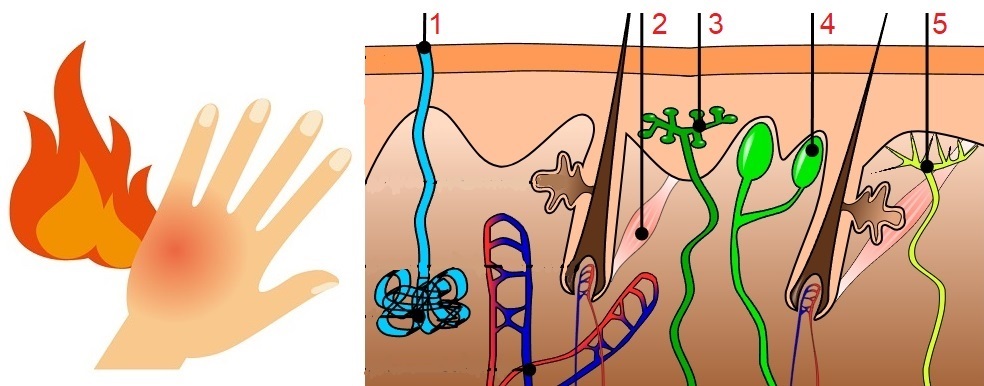Effect of an agent (lat. astringens) whose ingredients cause skin tissue or mucous membranes to contract (lat. astringere = to contract). The astringent forms compounds with the proteins of the skin and mucous membranes, which form a protective wall (membrane). In medicine, such agents as alum are used to stop bleeding, and this substance also has an antibacterial and antiseptic effect. In the context of a wine evaluation, astringent is understood to be a sensation complex that is expressed by a rough effect that dries out the oral mucosa or "pulls the mouth together". This is caused by high levels of tannins(phenols, tannins), which are found especially in the woody parts of fruits such as stems, pods, skins and seeds. These are, for example, artichokes, pomegranates, almonds, persimmons, chestnuts, green nuts, sloes, wild strawberries and anthocyanin-rich (colouring-rich) grape varieties. The latter, like the ones shown in the picture, usually have a dark (black) berry colour.

Perception
These sensations are perceived haptically (active = touching) or tactilely (passive = being touched) via corresponding receptors. The astringent substances cause a contraction of the organic tissue in the oral cavity, stop the secretion of saliva and thus have a roughening effect on the mucous membranes. However, this is not (although it seems to be) an olfactory or gustatory sensation, but a tactile or trigeminal stimulus (concerning the sense of touch) on the mucous membranes of the inner cheeks and the nasal cavity. However, this should not be confused with bitter or sour. The extent also depends on the wine temperature and is perceived more strongly with cooler wine. This can range from faint to intrusive to negative aggressive.

The picture shows the human skin with the receptors (3, 4 and 5) receiving the sensations haptically (active = touching) or tactilely (passive = being touched): 1 = sweat pore, 2 = muscle, 3 = pain, 4 = touch, 5 = pressure. In contrast, taste is perceived gustatorily (tasting) and smell olfactorily (smelling).
Astringency in wine
Astringency is usually mainly a characteristic of young red wines. The impression can become much less pronounced during bottle age ing or the ageing process, and can even disappear completely due to the precipitation of the substances that cause it. The astringent effect is mostly positive in low-acid red wines and can also stimulate the appetite. In white wines, on the other hand, astringency is usually an undesirable negative characteristic and is referred to as phenolic.

Further information
For more information on this topic, see also smell, taste, drinking culture (antiquity to the present day), wine address (description), wine evaluation (assessment), winemaking, wine enjoyment and wine with food.
Grape varieties: Ursula Brühl, Doris Schneider, Julius Kühn-Institut (JKI)
Hand: PNGWING
Skin (edited): by Sgbeer - Own work, CC BY-SA 3.0, Link
Wine glasses: by Photo Mix on Pixabay
Voices of our members

As honorary chairman of the Domäne Wachau, it is the easiest and quickest way for me to access the wein.plus encyclopaedia when I have questions. The certainty of receiving well-founded and up-to-date information here makes it an indispensable guide.
Hans-Georg Schwarz
Ehrenobmann der Domäne Wachau (Wachau)